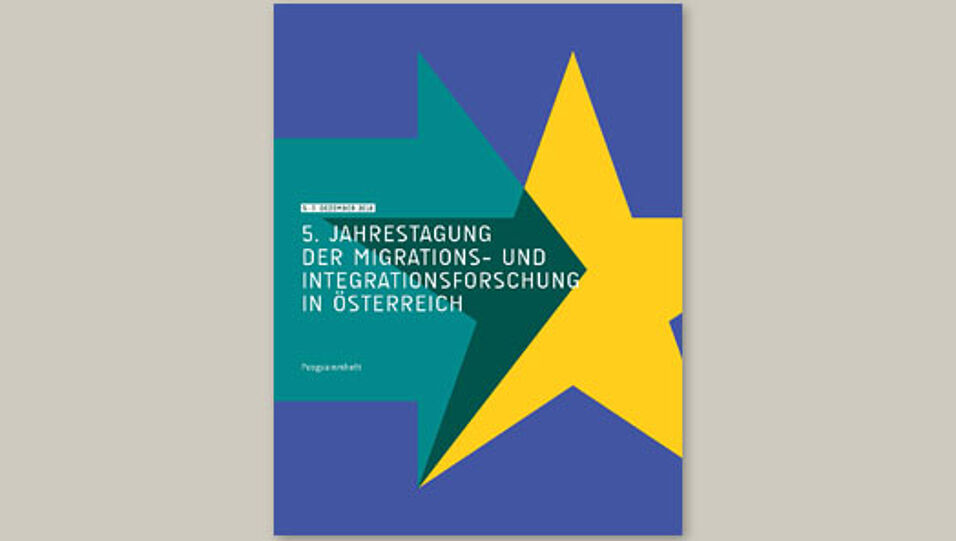Die Kommission für Migrations- und Integrationsforschung und das Institut für Stadt- und Regionalforschung der Österreichischen Akademie der Wissenschaften luden in Zusammenarbeit mit der Fakultät für Sozialwissenschaften im Dezember 2018 wieder zur Jahrestagung der Migrations- und Integrationsforschung in Österreich. Die Tagung, die in einem zweijährigen Rhythmus stattfindet, fand nun zum bereits fünften Mal statt und war wieder hochkarätig besetzt. Insgesamt 21 Panels und 73 Vorträge wurden auf Basis von Einreichungen aus einer offenen Ausschreibung zusammengestellt. Auch die Arbeitsgruppe Bevölkerung, Umwelt und Entwicklung des Instituts für Geographie und Regionalforschung war vertreten und gestaltete zwei Diskussionspanels mit.
Zunächst ging es am 6.12.2018 um das Thema "Translokalität und Mobilities - Innovative theoretische Ansätze zur Erforschung von Migration und Integration, und Beispiele für die Umsetzung in der Forschungspraxis". Das Panel wurde von Mag. Raffaella Pagogna, Prae-Doc in der Arbeitsgruppe, und Dr. Gunnar Stange, Post-Doc-Wissenschaftler in der Arbeitsgruppe, geleitet. Teilnehmer waren Harald Sterly von der Universität Bonn, Tabea Bork-Hüffer von der Universität Innsbruck und Simon Peth, ebenfalls aus Bonn, sowie Prof. Patrick Sakdapolrak, Leiter der Arbeitsgruppe an der Universität Wien. Thematisch deckte das Panel ein breites Spektrum von "Land-Stadt-Migranten in Bangladesh" über transkulturelle und Langzeitstudien mit kognitiven Karten zur Wahrnehmung von Orten bis hin zu "translokalen Beziehungen thailändischer Arbeitsmigranten in Singapur im Kontext sozialer Segregation" ab.
Das zweite Panel mit Beteiligung der Arbeitsgruppe Bevölkerung, Umwelt und Entwicklung fand am zweiten Tagungstag, dem 7.12.2018, statt. Es wurde geleitet von Prof. Karl Husa und Prof. Patrick Sakdapolrak. Der Fokus dieses Panels lag auf den aktuellen Trends der Forced Migration Studies in Südostasien und damit auf einem der zentralen Schwerpunktgebiete des Instituts und der Arbeitsgruppe. Universitätsassistent Dr. Gunnar Stange nahm mit einem Beitrag über den aktuellen Wissensstand zu Forced Migration in Südostasien am Panel teil, Corinna Krome von der Freien Universität Berlin beschäftigt sich mit Fragestellungen von Forced Migration insbesondere in den Mitgliedsstaaten der ASEAN und Jera Lego von der in Tokio ansässigen Asian Development Bank mit dem Thema "Identifying Refugees and Asylum Seekers in Thailand and Malaysia".
Diese beiden und die vielen weiteren Panels und Vorträge sind ein Beweis für die Breite der aktuellen Migrations- und Integrationsforschung in Österreich und darüber hinaus. Und sie zeigen, dass die Arbeitsgruppe Bevölkerung, Umwelt und Entwicklung mit ihren Forschungsgebieten und Schwerpunkten im internationalen Diskurs bestens positioniert ist.
Weitere Informationen zur Tagung und allen anderen Panels und Vorträgen können im Tagungsprogramm eingesehen werden.

